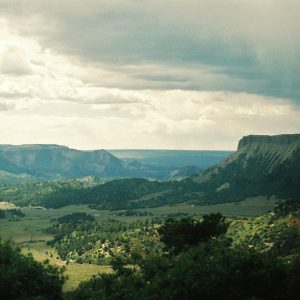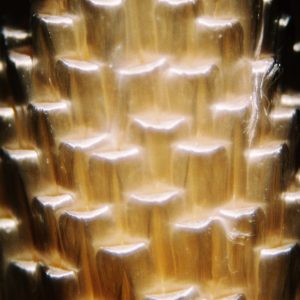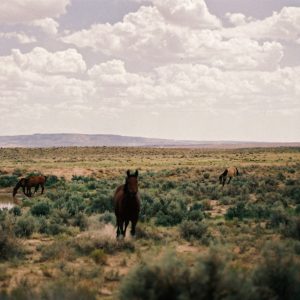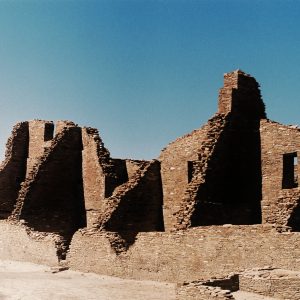I stepped out of the air-conditioned cab of my BLM vehicle. Heat surrounded me. I lost my breath. The suffocating heat of summer was asphyxiating. I was nervously anticipating the call of duty, the heat of the day, and the mission before us- but it had to be done. Our mission was to defeat the alien invaders from their newly colonized landing atop one of the rarest ecosystems on the planet. We were to attack at high noon.
The Monvero Dunes are located in the mountainous western boundary of California’s central valley (Tumie Hills area). The Monvero area comprises a number of small dune islands located on the summits of Monocline ridge, a jagged ridge that hugs the eastern rim of the mountains. The vegetation is unique to the zone. A unique array of plants has colonized these dune islands, including several species native to the Mojave Desert, hundreds of miles away. The dunes are also home to the rare and endangered kangaroo rat and Monvero beetle.
These species are now suffering the overthrow of their precious communities and robbery of their resources by a colony of aliens, which is why we were here now: to remove the aliens by force and restore the precious balance of life that existed before the invasion.
We grabbed our weapons of choice and silently ascended the steep sandy slopes. To our dismay, we saw that we were highly outnumbered, but the unsuspecting aliens were armed only with small spines. We begged the higher powers for strength, and jumped into action.
The battle was on. Sand was flying. The heat was intense. The weight of our weapons seemingly increased with each blow. The shadows of the mountains grew long and elegant as the evenings hue burned red. The battle endured.
As the sunset and the moon rose, corpses littered the sands. We combed the battlefield for any survivors. There were none.
Exhausted, sun-burned, tired, but victorious, we celebrated that evening under a millions stars with the kangaroo rats, the beetles and the accomplishment of holding onto a gem that would have otherwise been lost forever.
Monthly Archives: October 2011
Fall in the Four Corners
I am now well into my fifth month here in Farmington, NM and in terms of SOS and the work I have been doing, it has been absolutely wonderful. The nights have grown colder and the fall plants are coming out. We have many species we are monitoring and collecting from, and I estimate that we will be able to collect anywhere from 9-15 more species before the end of October. Productivity is high right now, which is soo awesome compared to last month’s dip (straddling between the two rain seasons). Aside from SOS, I feel this month has been particularly unique in that we have seen much more of the “Enchantment” this land has to offer.
We recently ventured out to Chaco Canyon, which if you do not know is home to some pretty impressive Native American ruins. We drove through the bottom of the canyon, a wide plain which straddles a lone river running through it; on either side there are ruins. Some look like small hills with broken remnants of walls and archways sticking out the top like icebergs-where the rest is hidden beneath. Others are exposed and beaten. From a distance I could immediately pick out the small knolls and monuments and began to see a picture of a city long lost through centuries of struggle and strife. A place where people were interconnected through trade, language and family. It is said that this place has trails leading off to Mesa Verde and surrounding archeological sites. In fact, in the old days runners would pass mail to each other like batons in a relay race for miles and miles; this was their method to communicate between villages.
One monument, the largest ever registered through archeological records stands over 3 stories in the distance, and is from what I could tell an old gated community in the shape of a half circle (the diameter being over 150 ft wide). I walked through small doors and passageways, stood and peered into dark tunnels and gazed through countless windows that span across the ruin, like looking into a double-mirror. The walls, made from rock and mortar, were stacked so evenly that at times seemed perfectly straight. These guys could be the masters of the slowest game of Tetris! Not to mention, in the hot New Mexico sun the shaded parts of the walls were cool to the touch, and nice to lean against. I continued to lose myself until eventually spilling out on the other side of the ruin. This place is magical, and for me immediately stood out from anything else I had experienced. The history and knowledge Chaco Canyon reveals is astounding.
I look forward to the next month of my internship. My co-worker and I plan on camping Columbus day weekend at the GRAND CANYON! We figure, it’s only 5 hours away and this way we won’t have to envy last year’s interns (jk jk, but seriously). If things keep going like they have, then October will be the best month yet!
In spirit of the countless hours of NPR we listen to in the field~ Be well, do good work and keep in touch!
Anthony Wenke





